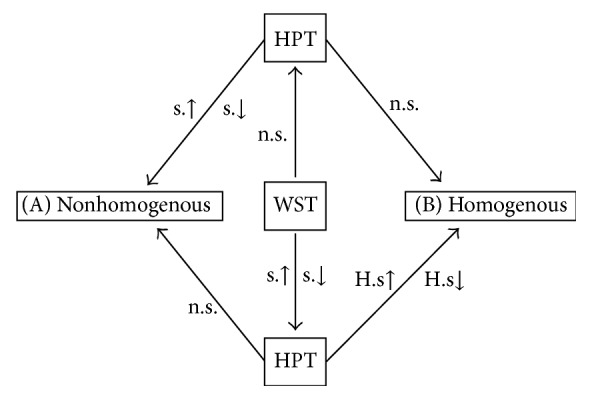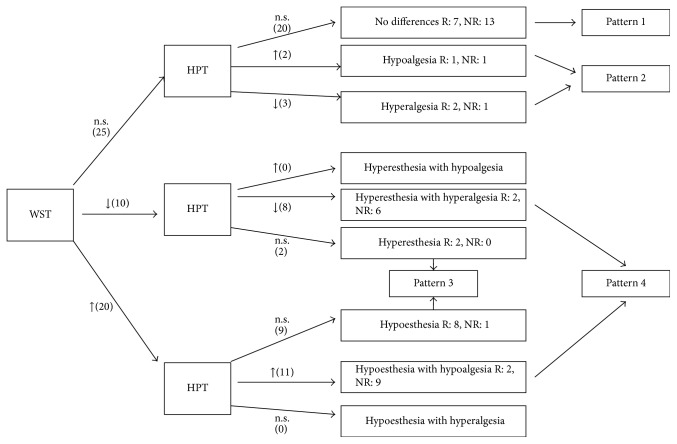Quantitative Thermal Testing Profiles as a Predictor of Treatment Response to Topical Capsaicin in Patients with Localized Neuropathic Pain.
Q2 Medicine
引用次数: 6
Abstract
There are no reliable predictors of response to treatment with capsaicin. Given that capsaicin application causes heat sensation, differences in quantitative thermal testing (QTT) profiles may predict treatment response. The aim of this study was to determine whether different QTT profiles could predict treatment outcomes in patients with localized peripheral neuropathic pain (PeLNP). We obtained from medical records QTT results and treatment outcomes of 55 patients treated between 2010 and 2013. Warm sensation threshold (WST) and heat pain threshold (HPT) values were assessed at baseline at the treatment site and in the asymptomatic, contralateral area. Responders were defined as those who achieved a > 30% decrease in pain lasting > 30 days. Two distinct groups were identified based on differences in QTT profiles. Most patients (27/31; 87.1%) with a homogenous profile were nonresponders. By contrast, more than half of the patients (13/24, 54.2%) with a nonhomogenous profile were responders (p = 0.0028). A nonhomogenous QTT profile appears to be predictive of response to capsaicin. We hypothesize patients with a partial loss of cutaneous nerve fibers or receptors are more likely to respond. By contrast, when severe nerve damage or normal cutaneous sensations are present, the pain is likely due to central sensitization and thus not responsive to capsaicin. Prospective studies with larger patient samples are needed to confirm this hypothesis.


定量热测试作为局部神经性疼痛患者局部辣椒素治疗反应的预测因子。
目前尚无可靠的预测辣椒素治疗反应的指标。考虑到辣椒素的应用会引起热感觉,定量热测试(QTT)剖面的差异可以预测处理反应。本研究的目的是确定不同的QTT谱是否可以预测局限性周围神经性疼痛(PeLNP)患者的治疗结果。我们从2010年至2013年间接受治疗的55例患者的医疗记录中获得QTT结果和治疗结果。热感觉阈值(WST)和热痛阈值(HPT)在治疗部位和对侧无症状区域的基线进行评估。应答者被定义为疼痛减轻> 30%,持续> 30天的患者。根据QTT谱的差异确定了两个不同的组。大多数患者(27/31;87.1%)均为无应答者。相比之下,超过一半的非均匀型患者(13/24,54.2%)有应答(p = 0.0028)。非均匀的QTT谱似乎可以预测对辣椒素的反应。我们假设皮肤神经纤维或受体部分丧失的患者更可能有反应。相反,当存在严重的神经损伤或正常的皮肤感觉时,疼痛可能是由于中枢致敏,因此对辣椒素没有反应。需要更大患者样本的前瞻性研究来证实这一假设。
本文章由计算机程序翻译,如有差异,请以英文原文为准。
求助全文
约1分钟内获得全文
求助全文
来源期刊

Pain Research and Treatment
Medicine-Anesthesiology and Pain Medicine
CiteScore
3.60
自引率
0.00%
发文量
0
 求助内容:
求助内容: 应助结果提醒方式:
应助结果提醒方式:


